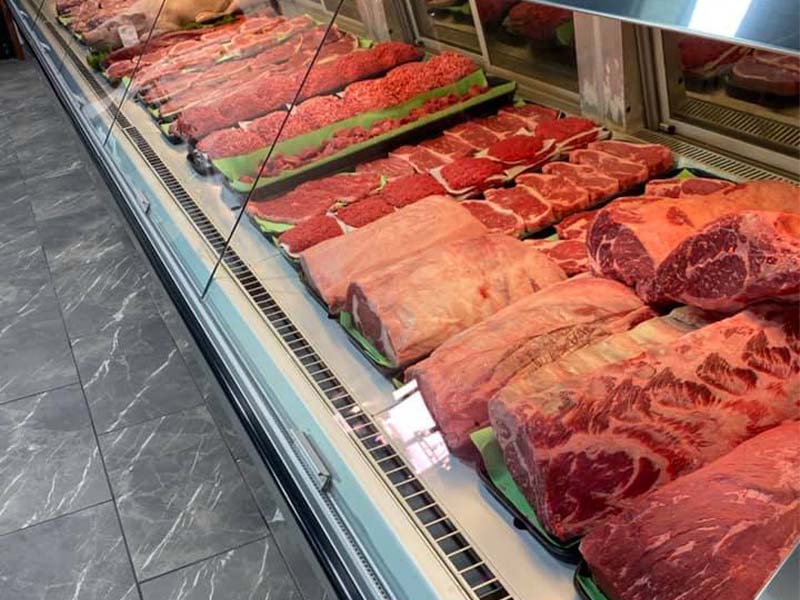What Makes Bagley Farms Meat Market Edwardsville IL Stand Apart for Meat Lovers
What Makes Bagley Farms Meat Market Edwardsville IL Stand Apart for Meat Lovers
Blog Article
Reveal the Art of the Butcher's Cut in a Modern Meat Market
In the ever-evolving landscape of modern meat markets, the butcher's cut has actually transcended its typical origins, merging age-old craftsmanship with modern techniques. Today's butchers are not simply processors of meat; they are experienced artisans who emphasize sustainability and ethical sourcing. Their experience in choose and preparing cuts customized to details cooking requirements provides an unequaled eating experience. Yet, what absolutely establishes the contemporary butcher apart is their ability to create a deeper connection in between customers and the origins of their meat. Just how do these masters equilibrium custom with technology, and what ramifications does this have for the future of meat usage?
Development of Butchery Methods
The advancement of butchery methods reflects an abundant tapestry of technology and adjustment driven by improvements in innovation, changes in customer demand, and a much deeper understanding of meat science. Historically, butchery was a craft passed down via generations, with techniques developed over centuries to make best use of yield and flavor. Nonetheless, the commercial transformation ushered in automation, transforming typical techniques and making it possible for large handling.
The mid-20th century saw butchery techniques additionally improved by scientific insights right into muscle biology and meat aging, boosting both tenderness and preference. Developments like vacuum cleaner packaging and refrigeration extended product shelf-life, enabling butchers to branch out offerings and boost high quality control. This duration additionally marked the rise of specific equipment, such as band saws and meat slicers, which boosted accuracy and efficiency in meat processing.

Digital systems now assist in tracking animal provenance and maximizing cuts to satisfy details consumer choices. In addition, a rebirth in artisanal butchery has arised, mixing typical abilities with modern knowledge to cater to consumers seeking honest and sustainable meat options.
Comprehending Meat Cuts
Understanding the ins and outs of meat cuts is vital for both butchers and consumers looking for quality and value. For butchers, precise cuts show ability and regard for the craft, guaranteeing marginal waste and optimum yield.

Recognizing muscular tissue structure is vital; muscles used more regularly by the animal tend to be harder and are best fit for slow food preparation techniques, while less-used muscles, like those located in the loin, are extra tender and perfect for barbecuing or roasting. Knowledge with these differences empowers customers to make educated choices, boosting their cooking undertakings.
Choosing High Quality Meat
Choosing the ideal meat involves even more than simply picking an aesthetically attractive item from the screen. The art of picking high quality meat requires a critical eye and knowledge of details qualities that signify quality and excellence.
Secondly, take into consideration the marbling, which refers to the white flecks of fat within the muscle mass. Proper marbling is a crucial indicator of inflammation and taste, as it melts throughout cooking, improving the meat's juiciness. Remember, higher marbling frequently correlates with exceptional top quality cuts, such as USDA Prime.
Appearance is another crucial aspect; meat must really feel solid to the touch, not slimed or excessively soft. Furthermore, bear in mind the aroma. Fresh meat must have a tidy, neutral Click Here scent, without any type of sour or off-putting odors.
Matching Cuts With Food Preparation Techniques

On the other hand, harder cuts like brisket and chuck roast are abundant in collagen, which breaks down into jelly when cooked slowly. These cuts are excellent for braising or slow roasting, allowing the meat to soften over time and develop deep, complicated tastes. Cuts such as brief ribs and pork shoulder make out well with slow-cooking methods, where extended cooking times transform their robust textures into succulent dishes.
Lamb shanks and oxtail, which require extended food preparation to soften, are best prospects for stewing or sluggish simmering. These techniques coax out abundant, passionate tastes while preserving dampness. By understanding the distinct features of each cut, chefs and home cooks alike can elevate their cooking creations, making certain each dish is both satisfying and remarkable.
The Butcher's Role Today
Browsing the developing landscape of the contemporary meat market, the butcher's duty today extends past plain helpful resources preparation of cuts. Contemporary butchers are culinary craftsmens, teachers, and supporters for lasting methods. They connect the void in between the farm and the fork by making sure moral sourcing, comprehending pet husbandry, and prioritizing openness in the supply chain. This shift reflects the expanding consumer need for high quality over quantity, where provenance and pet well-being are vital. this post
In enhancement to crafting exact cuts, butchers now engage directly with consumers, using cooking recommendations and customizing selections to suit specific demands and preferences. Their expertise in meat aging, marbling, and flavor accounts encourages customers to make informed choices, boosting their cooking experiences. This tailored solution exhibits the butcher's evolving duty as a trusted advisor in the kitchen.
Additionally, butchers are pivotal in reducing waste, using whole animals to produce varied items such as sausages and supplies. This thorough approach not only appreciates the pet yet also lines up with contemporary sustainability objectives. By doing this, the modern butcher embodies both custom and technology, adapting to an ever-changing market while protecting the creativity and honesty of their craft.
Conclusion
Mastery in recognizing varied meat cuts and quality signs encourages butchers to supply informed recommendations, lining up certain cuts with optimum cooking techniques. By recognizing historical techniques while welcoming modern needs, the butcher's duty continues to be essential in today's innovative meat market.
Report this page